#mine reclamation
Explore tagged Tumblr posts
Text


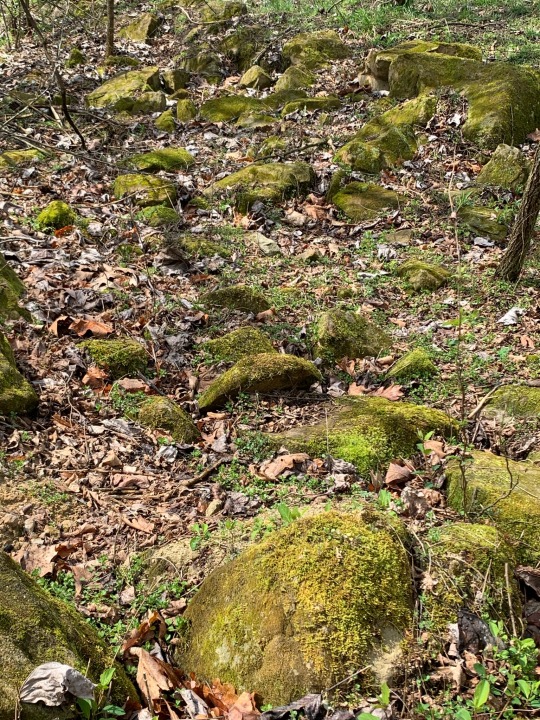

abandoned strip mine 18 years after volunteers planted trees into the ground of mostly broken rock and partly scant clayey soil
So cool to see how the forbidding boulders and stones become lush with moss and lichens and the ferns and small plants return
363 notes
·
View notes
Text
This Truetown AMD to Pigment project was brought to you by a $3.48 million grant under the Abandoned Mine Land Economic Revitalization (AMLER) Program to Athens County, OH
The Truetown project will address one of the largest sources of acid mine drainage (AMD) from abandoned coal mines in Ohio. The discharge from the mine, located in Truetown, severely impacts water quality for 7 miles downstream in Sunday Creek. The project will provide treatment of the AMD and recover iron oxide to produce pigment. Pigment will be produced using treatment methodologies developed by Ohio University that create high-quality /high demand pigments for art and multiple commercial industries and pigment sales will off-set treatment operational costs. The project will create multiple full-time jobs to run the treatment facility and many ancillary jobs involved with producing, shipping, and sales of pigment. Project partners involve Ohio University Russ College of Engineering, Rural Action, and True Pigments LLC. Project construction is planned to start in 2022.
check out True Pigments and Ohio Dept of Natural Resources for more
So what this paint company does is take iron pollution from abandoned mines that are polluting soils and rivers and makes iron based red pigment paints out of it.


Basically they realized hey no one's cleaning this shit up, it's polluting the streams, killing all the fish, making the water undrinkable and there's a huge market for it so why not make money by cleaning it the fuck up?

They remove this stuff by the industrial bucket load from the rivers. The idea is if it's in a painting, if it's in your home, it's not poisoning wildlife.
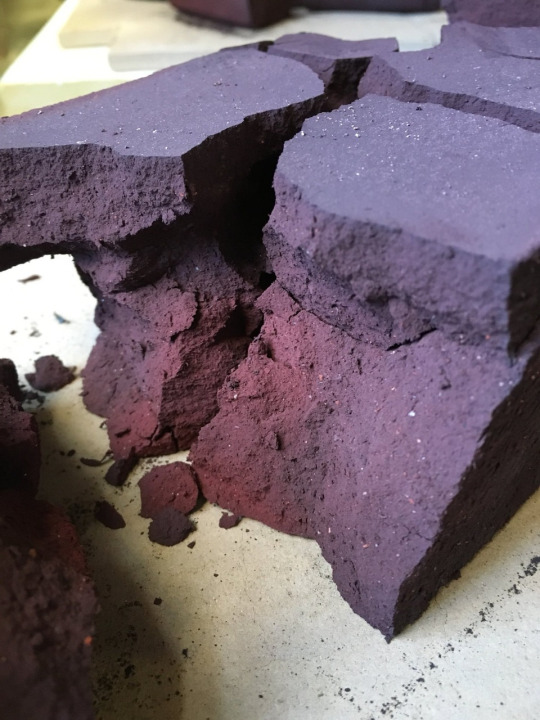

anyway its cool as shit, please support tf out of these people https://gamblinstore.com/reclaimed-earth-colors-set/
71K notes
·
View notes
Text






Douglas Falls on the North Fork of the Blackwater River is one of the loveliest of the many falls to be discovered in and around the Blackwater River Canyon. The falls is located adjacent to Douglas, West Virginia, an historic mining town about two miles from Thomas. The river here has suffered mightily from the acidic effluent of several abandoned mines nearby, leaving the streambed and boulders stained by "yellow boy" (iron hydroxide) in the AMD. Fortunately, the Friends of Blackwater has a number of mitigation and reclamation projects in progress that have already improved water quality. Eventually, the river's flow will scour away this awful legacy. The improvement in the river's health combined with the recent news that the lower part of the canyon will soon be in public ownership signal brighter days ahead for the watershed.
#appalachia#vandalia#west virginia#waterfall#fall#autumn#douglas falls#blackwater canyon#north fork of the blackwater river#acid mine drainage#reclamation#conservation#friends of blackwater
77 notes
·
View notes
Note
"you know my stance on the usefulness/health of taylor constantly going backwards and relitigating the emotional reality of her life in the past….." I must have missed some posts because everything you said kind of blew my mind 😭 have you posted about this before?
oh to be fair i almost never post about taylor anymore and it occurs to me that usually when i do post-re-record release people get so upset with me i just delete them all 😭😭😭 this really has nothing to do with taylor specifically i just am not a person who loves like. going over and over and over something that’s already happened and esp for taylor who is. shall we say perhaps a little stuck in amber by virtue of superstardom this whole thing is like. well one day i’d like you to let your past selves rest in peace and just look forward into the clear skies where you can build whatever you want. because writing prologues about hurts you felt when you were 24 so you can release music about when you were 24 is like. well i hope this is doing what you want it to do, i support whatever you need but i’m sitting here patiently waiting for adult in-her-thirties taylor to feel more comfortable with that fact and start making music for that crowd.
#to be clear i am not against the rerecordinfs i love reclamations fueled by righteous bitterness#my patience is just be tried by how long this is going and how we have to do this whole cycle every time#like MINE. my. i know this is a personal reaction and i’m not saying there’s no validity. but like i watched miss americana! and that girl#was barely waking into the consciousness of being an Adult so everytime she unburies a past self im like well. we shouldn’t be living in#THIS space for too long#taylor swift#i literally just already know all this / don’t think the re-records are better / wants new stuff that is good
42 notes
·
View notes
Note
Dear Lady Lord Bread,
How are you doing today? Have you discovered any new information you'd like to share?
Sincerely, Anon.
I’m doing well. And New Information? Hmm…
I’m learning a lot about Land Reclamation in my class! Mining and abandoned industrial land are a huge problem all around the world. There is a lot of effort put into reclaiming land back to a healthy state, not just for the environment but for people in those affected areas. The biggest problem facing these clean ups is cost, but it’s been done before and I’m learning just how complex it can be to clean up these areas right! I’m loving it 🥰



#I love this stuff so much. the future has so many young people looking to protect it and these classes although sad give me so much hope#a lot of like minded people#and adults!#environment#bread#ask stuff#environmental science#mining#land reclamation
28 notes
·
View notes
Text
One of the best and easiest job retraining programs is mine worker —> mine reclamation/restoration worker.
"Sunlight dapples the once-denuded forest floor as saplings spread their branches and leaves overhead, slowly forming a lush canopy.
Beside each young tree, a sign notes its species. Lupuna, says one, the colloquial Peruvian term, and below that its scientific name, Ceiba pentandra — in other words, a kapok tree, known for its cotton-like fibers. Huito, says another sign, or Geinpa americana, which produces edible gray berries.
Each sapling is distinct, a reflection of the Amazon's stunning biodiversity, with so many different species that you might go acres without finding a repeat.
Yet this young forest did not spring up naturally. It has been carefully recreated by humans in an area that was, until just three years ago, a heavily contaminated moonscape.
This land was stripped of its dense vegetation by miners scouring the subsoil for tiny specks of gold, using mercury to separate the gold from the sediment. Many thought that a healthy forest would never thrive in impoverished, mercury-laden topsoil and that the piles of sandy tailings, the residue from the gold mining effort, and the pools of wastewater were irremediable...
"It feels good to see the forest grow back," says Pedro Ynfantes, 66, the miner whose legal mining concession of 1,110 acres includes this 10-acre patch of land where this young forest is located. "We don't want to deforest. When we had the opportunity to let the forest grow back, we took it. It's much better this way."
The opportunity he refers to came via U.S. nonprofit Pure Earth, which works with communities across the Global Southto remediate environmental problems left behind by mining, much of it illegal. Their biggest targets are mercury and lead contamination...
Security forces have launched anti-mining operations down the years, even blowing up the miners' equipment deep in the jungle. But most local politicians, including Madre de Dios' members of Peru's national congress, broadly support the miners, who are a powerful constituency in the relatively sparsely populated jungle region.
Restoring the forest
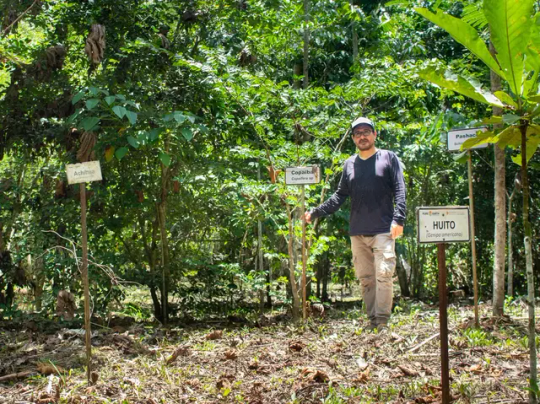
Pictured: France Cabanillas works for the nonprofit group Pure Earth, which is spearheading an effort to plant saplings in areas of the Peruvian Amazon that were devastated by illegal gold mining.
Now there's an effort to address the damage. Initially working with the region's legal miners, most of whom were here before the 2009 gold rush kicked off, the nonprofit group Pure Earth is using this patch of Ynfantes' land as a pilot project to show how the rainforest can be regenerated after the last traces of gold have been plucked from the soil.
It took a sustained outreach effort. Many miners are wary of or even downright hostile to foreign NGOs, which have repeatedly called for gold mining to be banned or severely curbed in the Peruvian Amazon — steps they say would cost them their livelihood.
"I am feeling optimistic," says France Cabanillas, Pure Earth's local coordinator, who has been appealing to the frustration of many miners at the heavy toll they have taken on the jungle and their desire to minimize their environmental footprint for the next generation.
"We still have a lot to do but this pilot is going well. Down the years, the miners have been getting a lot of stick but not much carrot when it comes to their environmental impacts," says Cabanillas. "We are offering them a carrot, allowing them to remediate their own impacts. Many of the miners do not want to be destroying the rainforest."
Before the miners plant the carefully-selected mix of tree species, they had to prepare the earth. Most of the topsoil had been washed away by the miners' heavy use of hoses.
That preparation involved adding biochar (burnt organic material) and even molasses, which contain fixed carbon and minerals, along with various other nutrients. The miners also had to dig tiny moats around the saplings to prevent all of this new planting from being washed away. Now, after three years, the forest is visibly coming back.
The rejuvenated rainforest also mitigates the impact of the mercury used by many of the illegal miners.
Research done by Pure Earth shows that the barren, sandy soil emits mercury. But in a rainforest, the ecosystem actually absorbs some of the metal, boosting public health."
-via NPR, April 2, 2024
368 notes
·
View notes
Text
Monument of dispear built upon dusty ruins
This grave overgrown, forgotten, underfoot
Trauma and turmoil still haunt out lives
That too will return to the earth
And evoke the roiling hills of old once again
2 notes
·
View notes
Text
The f slur is for people who have gay sex and the q slur is for people who hate people who have gay sex. Hope this helps
#and it’s whack bc like. conservatives use both as slurs to describe ppl they perceive as gay sex havers#so it’s wild that the Reclamation yall talk about just means turning it into a word about Not liking sex#’if you let it mean something bad it will stay a bad word! so let’s make it mean something wholesome and empowering (hating gay people)’#and then u assign what’s now Your word to gay people. along w the puritan culture you’ve attached to it#so then you’re surprised when gay people are gay. bc you’ve assigned them *ueer. it’s a cycle#mine#txt#f slur#q slur
5 notes
·
View notes
Note
no shade but how do u forget ur own url
when you’re sleep deprived on a TBI mind anything is possible
#plus the two urls i was thinking of weren’t like mine#but hey if it’s reclamation i’m all for it#☄️.mail
2 notes
·
View notes
Text
.
#i hate q slur discourse so im gonna vent about it here instead of commenting#but i do kind of hate how queer is used so universally as ~queer theory~ or ~queer lit~ or whatever#a) it isnt inclusive. reclamation is a complicated and personal process and its kind of unfair to hoist that on everyone#b) even when slurs are reclaimed like. it still feels weird to have them be used in the NYT#and in academia and shit#its also really intetesting be the 'reclamation' is more spatial than temporal#like at the same time my university offered queer history courses#i heard someone say 'ive never seen one of those queers. they know better than to come around here'#its not that im opposed to its reclamation or use#but it feels soooooooo disingenuous to act like reclamation is a finished process and it feels like#to have it be used to advertise shitty YA lit to me#is just an insult. y'know? and academics that go 'queer just means difference or deviation from the norm!'#instead of a word people use to enforce SPECIFIC rules about who can perform femininity and when and how#like when i hear the word i think of a) the shitty conservatives from my hometown#b) academics whose theories i either find vastly overrated or horrifically misinterpreted#or c) seattle liberals whose experience of ~queerness~ is so vastly different than mine i sometimes wonder if we speak the same language#its a word that should be reclaimed by screaming and writing it on my arms at a protest#not by like. having spotify use it as a podcast category
1 note
·
View note
Text
The Center for Biological Diversity and Appalachian Voices today sued the U.S. Office of Surface Mining Reclamation and Enforcement and the U.S. Fish and Wildlife Service for failing to protect highly imperiled wildlife from the devastating harms of coal mining in Kentucky, West Virginia and Virginia.
The agencies have failed to implement required protections for imperiled species, putting wildlife such as the endangered Guyandotte River crayfish and candy darter and the threatened Big Sandy crayfish at great risk.
The lawsuit stems from an intensive investigation in progress since early 2022. The suit explains that the agencies have failed to ensure that essential protective measures are in place to prevent these federally protected species from going extinct, as the Endangered Species Act requires.
“Our in-depth investigation found a total breakdown in the process designed to protect imperiled wildlife from the disastrous harms of coal mining,” said Perrin de Jong, Southeast staff attorney at the Center for Biological Diversity. “Every state and federal agency responsible for implementing endangered species protections is asleep behind the wheel. If they put as much effort into following the law as they do helping the coal industry dodge its obligations to prevent extinction, these species would be in a much better place today.”
The Center and Appalachian Voices have uncovered hundreds of coal mining facilities in Kentucky, West Virginia and Virginia that threaten critical habitat for the two imperiled crayfish species and the candy darter — and which lack the required protections for the species and their habitat.
“Better protection for these rivers and creeks doesn’t just help threatened and endangered species, it is also crucial for the long-term wellbeing of the communities that depend on these important waterways,” said Willie Dodson, Central Appalachian field coordinator for Appalachian Voices. “It’s well past time that regulators do their jobs to ensure that the coal industry abides by the law and reduces water pollution that harms communities as well as at-risk species.”
#ecology#enviromentalism#wildlife services#crayfish#Office of Surface Mining Reclamation and Enforcement#appalachia
0 notes
Text
Ghost as the villain in your version of the Little Mermaid.
Ghost as an octopus merman, the prince of a ruined kingdom— once, long ago, having asked for a chance to court you for your hand in marriage, and refused by your father. Between human intervention, and the lack of allied kingdoms, his lands fell to ruin. He lives isolated in a cave outside of your kingdom, practicing dark arts— a skill that comes naturally to someone with so much bitterness in their soul from tragedies suffered.
He cultivates a reputation. Someone who can grant wishes, for a price. A last hope for the desperate. You would risk something as unimportant as your life if it meant a chance at your dream, wouldn’t you?
That’s how he meets you. You’d never seen him, he’d been refused by your father before you’d ever even met him, but he remembers you. Once the object of his earnest desires, now an obsession— unknowingly a symbol of the start of his ruination.
And now, in a further mockery, you’re in love. With a human man. (If I was feeling extra evil I’d make it soap heehee).
But this is a golden opportunity for him. If you make a deal with him, he could start on a warpath of reclamation. To possess all of the things denied to him— starting with a sweet little princess for a wife.
“True love,” he says, trying to cull the venom that’s bubbling in his throat at the mere idea of you finding happiness with another. “You’d risk somethin’ for that, wouldn’t you, darlin’?”
“You win his heart, and you stay on land with him, yeah? If not… you’re mine. D’we have a deal, sweetness?” He doesn’t mention to you that all’s fair in love and war, and he’s had more than enough experience in the latter to earn victory in the former.
#writing#cod fanfic#simon riley x reader#simon ghost riley#fairytale!au#simon riley x you#simon ghost x reader#cod x reader#cod x you
2K notes
·
View notes
Text
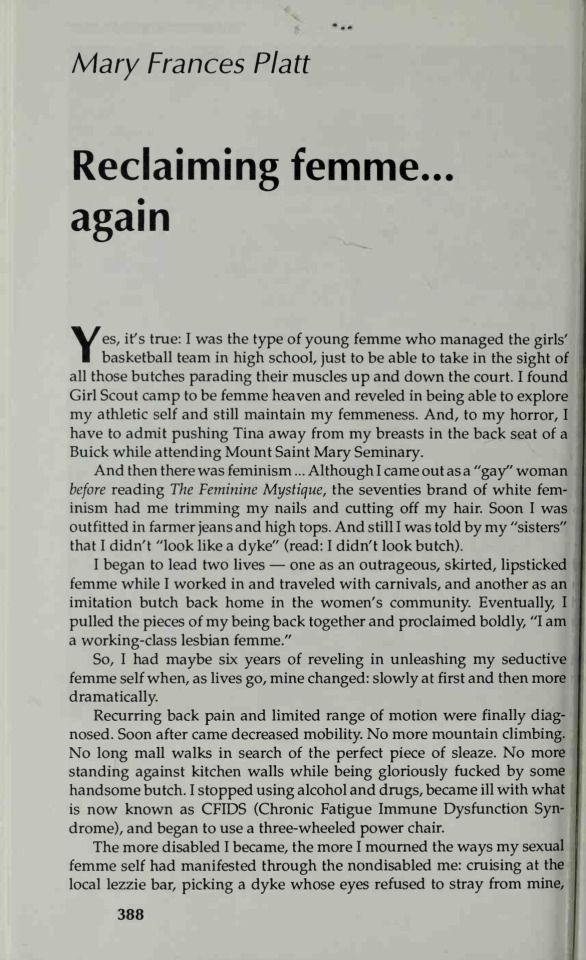

"Yes, it's true: I was the type of young femme who managed the girls basketball team in high school, just to be able to take in the sight of all those butches parading their muscles up and down the court. I found Girl Scout camp to be femme heaven and reveled in being able to explore my athletic self and still maintain my femmeness. And, to my horror, I have to admit pushing Tina away from my breasts in the back seat of a Buick while attending Mount Saint Mary Seminary. And then there was feminism... Although I came out as a "gay" woman before reading The Feminine Mystique, the seventies brand of white feminism had me trimming my nails and cutting off my hair. Soon I was outfitted in farmer jeans and high tops. And still I was told by my "sisters" that I didn't "look like a dyke" (read: I didn't look butch). I began to lead two lives- one as an outrageous, skirted, lipsticked femme while I worked in and traveled with carnivals, and another as an imitation butch back home in the women's community. Eventually, I pulled the pieces of my being back together and proclaimed boldly, "I am a working-class lesbian femme." So I had maybe six years reveling in unleashing my seductive femme self when, as lives go, mine changed: slowly at first and then more dramatically. Recurring back pain and limited range of mobility were finally diagnosed. Soon after came decreased mobility. No more mountain climbing. No long mall walks in search of the perfect piece of sleaze. No more standing against kitchen walls being gloriously fucked by some handsome butch. I stopped using alcohol and drugs, became ill with what is now known as CFIDS (Chronic Fatigue Immune Dysfunction Syndrome), and began to use a three-wheeled power chair. The more disabled I became, the more I mourned the ways my sexual femme self had manifested through the nondisabled me: cruising at the local lezzie bar, picking up a dyke whose eyes refuse to stray from mine, dancing seductively, moving all of me for all of her. Cooking: love and suggestion neatly tucked into the folds of a broccoli quiche. Serving my date in varying, sleazy clothing, removing layers as the meal and our passion progressed. And making love... feeling only pleasure as my hips rose and fell under the weight of her. Accomplishment and pride smirked across my face as her wrists finally submitted to the pressure of strong persistent hands. There are the ways I knew to be femme, to be the essence of me.
It's been five years now since I began using my wheelchair. I am just awakening to a new reclamation of femme. Yes. I still grieve the way I was, am still often unsure how this femme with disabilities will act out her seduction scenes. I still marvel when women find passion amidst the chrome and rubber that is now a part of me.
There have been numerous dates, lovers, relationships, sexual partners, and fliterations along the way. Cindy, Jenny, Ellie, Emma, Diane, Dorothy, Gail, June, Clove, Lenny, Cherry, Diana, Sarah I, and Sarah II. You have all reminded me in your own subtle or overt, quit or wild ways that I am desirable, passionate, exciting, wanted.
Yes I am an incredibly sexual being. An outrageous, loud mouthed femme who's learning to dress, dance, cook, and seduce on wheels; finding new ways to be gloriously fucked by handsome butches and aggressive femmes. I hang out with more sexual outlaws now- you know, the motorcycle lesbians who see wheels and chrome between your legs as something exciting, the leather women whose vision of passion and sexuality doesn't exclude fat, disabled me.
Ableism tells us that lesbians with disability are asexual. (When was the last time you dated a dyke who uses a wheelchair?) Fat oppression insists that thin is in and round is repulsive. At times, these voices become very loud, and my femme, she hid quietly amidts the lists.
Now my femme is rising again. The time of doubt, fear, and retreat has passed. I have found my way out of the lies and oppression and have moved into a space of loving and honoring the new femme who has emerged. This lesbian femme with disabilities is wise, wild, wet, and wanting. Watch out.
-"Reclaiming femme... Yet again" Mary Francis Platt, The Persistent Desire (Edited by Joan Nestle) (1992)
#lesbian#lesbianism#lesbian history#disabled lesbian#lgbt history#gay history#butch femme#femme lesbian#feminism#lesbian feminism#the persistent desire#intersectionality#disability history#disability rights
2K notes
·
View notes
Text
Agatha All Along Episode 7: Easter Eggs & References

Death’s Hand in Mine
Lilia Calderu’s Epic Leap into Her Destiny
In Agatha All Along Episode 7, “Death’s Hand in Mine,” that haunting line from Ballad of the Witches’ Road hits hard, especially for Lilia Calderu. This isn’t just another dramatic beat—it’s the heart of her story. Lilia knows exactly what’s coming, and instead of running from it, she steps right up and grabs it by the hand. She’s not just staring down death; she’s embracing it, ready to take her destiny head-on.
What’s truly wild is that her sacrifice isn’t just about going out in a blaze of glory; it’s a calculated move. Lilia realizes this is the only way to save her coven, and she’s all in. Her death isn’t born from fear but from a fierce determination to protect those she loves. As she plunges into the unknown, she flips what could’ve been a tragic ending into an epic act of heroism.
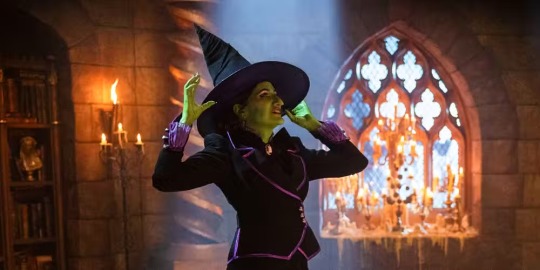
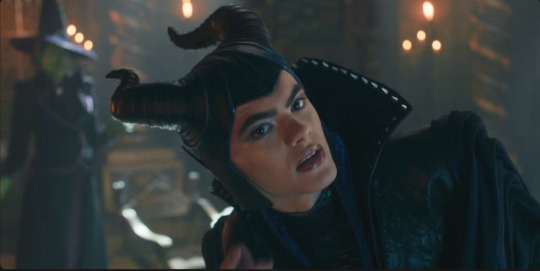
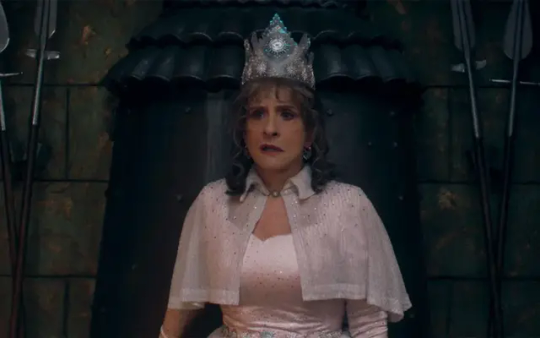
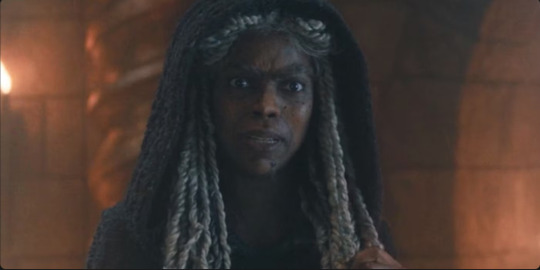
Witchcraft and Wardrobes
Channeling the Magic of Iconic Witches—Wicked, Glamorous, and Sinister
In Agatha All Along Episode 7, we dive headfirst into a magical realm where our favorite characters channel iconic witches from fantasy lore. This isn’t just a costume party; it’s a masterclass in storytelling that enriches our understanding of who they are and what they represent. Each outfit and persona acts like a mirror, reflecting deep themes of power, identity, and legacy in the world of witchcraft.
Agatha Harkness as the Wicked Witch of the West: When Agatha transforms into the Wicked Witch, she’s not just throwing on some green makeup and a black dress. No, this is a bold statement. The Wicked Witch is the epitome of cunning and darkness, and Agatha steps right into those shoes (or should we say, flying broomsticks). This parallel isn’t merely superficial; it invites us to question the nature of villainy. In The Wizard of Oz, the Wicked Witch is all about control, much like Agatha, who deftly manipulates events to carve out her narrative. By embodying this classic character, Agatha challenges our assumptions about good and evil, pushing us to explore the grey areas in between.
Billy Maximoff as Maleficent: Then we have Billy, rocking a look straight out of Maleficent’s wardrobe. This isn’t just a nod to the Disney villain; it highlights the complexity of Billy’s character. Maleficent is often portrayed as a symbol of empowerment, reclaiming her narrative after being wronged—sound familiar? Billy’s journey of self-discovery and grappling with his powers parallels this. By dressing as Maleficent, Billy taps into the darker aspects of his own identity, showing us that with great power comes not just the potential for heroism, but also the risk of losing oneself in the shadows of legacy.
Lilia Calderu as Glinda the Good Witch of the South: Lilia, on the other hand, embodies Glinda, the Good Witch. Draped in an ethereal gown, she radiates hope and support within the witch community. Glinda is a guiding light, offering wisdom and nurturing strength, and Lilia steps into this role with grace. This costume choice isn’t just about aesthetics; it reinforces the importance of sisterhood and collaboration among witches. In a world where Agatha often manipulates, Lilia’s character reminds us that power can also uplift and unite. She’s the bright spot amid the chaos, hinting at her potential to mediate the conflicts brewing around her.
Jennifer Kale as Snow White’s Hag: Last but not least, we have Jennifer, transforming into the menacing hag from Snow White. This choice is both haunting and poignant, capturing Jennifer’s tumultuous journey. The hag symbolizes the darker aspects of femininity, manipulation, and survival—elements that resonate deeply with Jennifer’s backstory as an 11th-generation root worker. By adopting this persona, Jennifer confronts her past traumas and societal perceptions of witches as malevolent. This metamorphosis is a declaration of resilience and reclamation, showcasing her evolution from victim to a powerful force in the magical realm.
Spellbinding Themes and Character Dynamics
This episode isn’t just about costumes; it’s a narrative device that lays bare the characters’ motivations and the overarching themes of the series.
Identity and Empowerment: The costumes serve as a canvas for each character’s struggle for self-definition in a world that loves to pigeonhole witches. Agatha’s embrace of her villainous side, Billy’s link to Maleficent, Lilia’s nurturing role, and Jennifer’s reclamation of her identity all spotlight the diverse spectrum of witchcraft. The show encourages us to reflect on how personal experiences and societal expectations shape who we become.
Sisterhood and Conflict: The dynamic between these witches highlights the delicate balance between unity and rivalry. Lilia’s supportive nature as Glinda is a stark contrast to Agatha’s more duplicitous tendencies, creating a rich ground for both conflict and collaboration. This tension echoes the broader theme of sisterhood, illustrating how witches can either lift each other up or become adversaries, depending on the choices they make.
Legacy and the Weight of History: Each character’s costume is a reminder of the rich histories they embody, prompting us to consider how their pasts shape their present identities. Whether it’s Agatha grappling with her villainous reputation, Billy dealing with familial expectations, Lilia confronting societal roles, or Jennifer struggling against limitations, the interplay of legacy and personal choice creates a narrative that resonates deeply with the complexities of modern witchcraft.
By weaving these references to iconic fantasy witches throughout history, Episode 7 of Agatha All Along not only pays tribute to beloved characters but also invites us to dig deeper into themes of power, identity, and the evolution of witchcraft in today’s storytelling landscape. It’s a beautiful reminder that the past informs the present, and in the world of witchcraft, nothing is ever as simple as black and white.
Another Trial, Another Countdown
The Hourglass Pushes Us One Step Closer to Destiny
The trial motif cranks up the tension in Episode 7 with the hourglass—your classic “time’s running out” symbol, and for Lilia, it’s hitting hard. She’s been battling against time her entire life, but the hourglass is the ultimate countdown to a fate she can’t dodge. It’s not just there for dramatic flair, though. This hourglass ties back to earlier episodes, where we had the kitchen timer in Episode 3, a metronome in Episode 4, and that retro ’80s digital watch in Episode 5. These weren’t just fun props—they were breadcrumbs leading to this moment. Time has always been Lilia’s greatest enemy, and as the sand slips away, so do her chances of rewriting her destiny. Her trial isn’t on the horizon anymore—it’s happening now.
Agatha Labels Lilia “Dory”
When Memory Lapses Meet a Perfect Pixar Zing
In Episode 7, Agatha’s sarcasm hits a new high when she calls Lilia “Dory” as she struggles to make sense of her disjointed memories. This clever jab is a clear reference to the forgetful fish from Finding Nemo and Finding Dory, voiced by Ellen DeGeneres. Just like the animated character who can’t keep a thought in her head for more than a few seconds, Lilia’s chaotic memory issues get a playful dig from Agatha, proving once again that no pop culture reference is off-limits when it comes to her sharp-tongued humor.
Billy’s Reunion Prophecy
Tommy Isn’t the Only Possibility
In Billy’s reading, Lilia drops the bombshell of an upcoming reunion. Naturally, Billy’s mind jumps straight to his twin brother Tommy—after all, that’s the whole reason he’s on this journey. But here’s the kicker: it might not be Tommy. This reunion could take a wild turn and involve someone unexpected, like the Scarlet Witch or even Vision. Whoever it is, you can bet it’s going to shake things up in a big way.
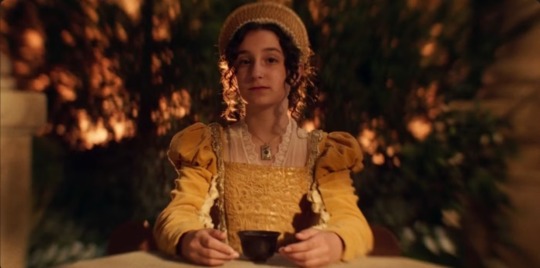
Lilia’s Flashbacks Pay Off Big
It All Comes Together in Episode 7
In Agatha All Along Episode 7, we finally get confirmation that all of Lilia’s seemingly random outbursts throughout the season are tied to her out-of-sync existence in time. Every cryptic line she’s dropped has been a breadcrumb leading us to this moment. Here’s a breakdown of each phrase in the order it was first said
“Wispy or Kooky?” – Episode 4
“Alice Don’t” – Episode 4
“Try to Save Agatha” – Episode 3
“I Hated This the First Time” – Episode 5
“Get Off Me” – Episode 2
“You Know We Really Hated Each Other in the Beginning, But Now…” – Episode 3
“I Love You Guys” – Episode 3
When you piece them together, it’s pretty touching to realize that some of Lilia’s final words were expressions of her newfound love for the coven. The bonds she formed as they walked down the Witches’ Road make her sacrifice even more impactful. Her out-of-sequence life wasn’t just a quirky character trait—it became the key to saving her coven when the Salem Seven came knocking. Lilia’s journey may have been chaotic, but in the end, it was all part of her story of loyalty and selflessness.

Lilia’s Tarot Drop in Episode 7
The Cards Are More Than Magic—They’re the Coven
Throughout Agatha All Along, Lilia Calderu’s cryptic outbursts weren’t just random—they were actually names of Tarot cards that come into play during her trial in Episode 7. Here’s how each Tarot card, previously mentioned by Lilia, ties into key characters and moments:
Queen of Cups – This one is all Lilia. She’s the intuitive force, trusting her inner voice even when time itself is working against her.
Three of Pentacles – Represents the entire coven. It’s about collaboration and sisterhood, something Lilia had been missing but ultimately finds in her fellow witches.
Knight of Wands – Linked to Alice and her recent death, symbolizing the path already taken and what’s been lost.
High Priestess – All eyes on Jennifer here. She’s the future, holding immense spiritual power, even if she’s not ready—or willing—to use it yet.
Three of Swords – Agatha holding Billy, representing the obstacles ahead: heartbreak, sorrow, and grief. It’s the emotional weight hanging over them all.
Tower (Reversed) – A symbol of destruction and upheaval, but reversed, it hints at miraculous transformation amidst the chaos.
Death – Of course, Lady Death herself, marking the inevitable end. “Death Comes for Us All” rings loud and clear here.
The way Agatha All Along uses these Tarot cards to weave together Lilia’s journey is brilliant. Episode 7 really nails the narrative payoff, showing how each card connects not just to Lilia, but to the entire arc of the show. It’s a well-executed nod to both Lilia’s fate and the future that awaits the coven.

Rio’s Big Mic Drop
Lady Death? Yeah, She’s the OG Green Witch
Well, there it is! Rio just claimed the title of Lady Death, proving she’s been the original Green Witch all along. Things are about to get real wild!
Episode 7 of Agatha All Along drops a bombshell in its final moments—Lilia finds out that Rio Vidal is none other than the living embodiment of Death herself. Yup, you heard that right. Turns out, Rio’s the original Green Witch, and all those subtle clues sprinkled throughout the season finally come full circle. Oh, and Agatha? She knew the whole time, of course. With this massive reveal now out in the open, the last two episodes are set to explore just how insanely powerful Rio really is, and let’s be real—the stakes just got cranked up to eleven.
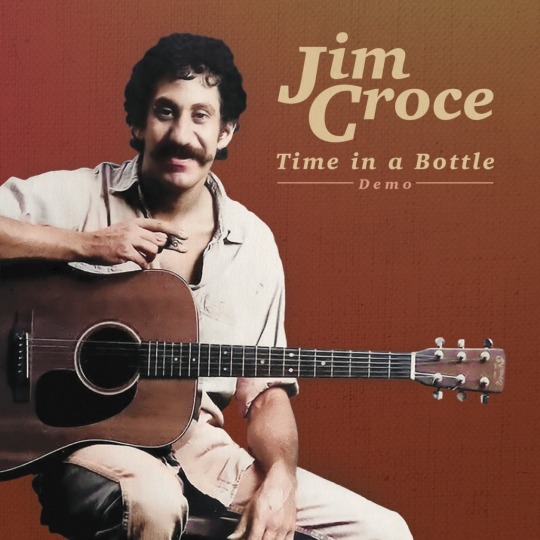
“Time in a Bottle” Packs a Punch
Lilia’s Emotional Rollercoaster and a Nod to Quicksilver’s Epic Scene
In Agatha All Along Episode 7, we get hit with Jim Croce’s “Time in a Bottle” during the end credits, and let me tell you, it’s not just background noise—it’s a deep cut into Lilia’s entire journey. This track does more than just set the tone; it taps into her power, her sacrifice, and the emotional weight of her story. When Lilia says, “Time is an illusion,” it’s not just a throwaway line—it’s the crux of her whole deal, living her life in a way that doesn’t follow a straight path.
The lyrics, “If I could save time in a bottle… just to spend them with you,” basically summarize Lilia’s abilities. She’s lived with time bottled up inside her, experiencing moments out of order. But, like the song, she couldn’t actually control it—she could only observe, never change. It’s that heartbreaking realization that, while she has the power to see everything, the moments still slip through her fingers. Much like Croce’s wish to preserve time for someone he loves, Lilia experiences her own life’s key moments—both the good and the gut-wrenching—but they always feel more like fate than choice.
Croce’s next line, “But there never seems to be enough time to do the things you want to do, once you find them,” hits hard for Lilia. Even with her foresight, even knowing what’s coming, she couldn’t avoid the tragedies she saw. It was all laid out in front of her, but she was locked into it, just like her destiny. And in her final moments, she sacrifices herself, not because she had a choice, but because she had already seen it play out. That’s the kicker—it wasn’t desire driving her actions, it was inevitability.
“If I had a box just for wishes and dreams that had never come true…” Okay, this line? It sums up Lilia’s entire existence. She wasn’t making decisions based on dreams or hopes—she was following a script she’d already lived. Everything she did—casting the sigil, warning Agatha—wasn’t a choice. It was something she’d already done, over and over again, like a broken record. And the acceptance of that is what makes her story so tragic yet powerful.
By the time her death arrives, Lilia’s already prepared. She knew it was coming, and her Maestra’s lesson—that divination is about bracing for the future, not changing it—was the backbone of her life. She fought against what she saw but couldn’t escape it. Her story, much like Croce’s song, is a bittersweet reminder that no matter how much we wish to freeze time or hold onto moments, it’s always slipping away.
Now, for the Marvel fans out there, let’s not forget the bigger picture here. “Time in a Bottle” was also the iconic soundtrack for Quicksilver’s unforgettable scene in X-Men: Days of Future Past, and with Evan Peters’ appearance in Agatha All Along, the connection feels like more than a casual nod. Just like Lilia’s fate, the song is all about love, loss, and the ticking clock we can’t outrun. It leaves us wondering—if Lilia could’ve truly controlled her time, how much would she have saved?
#marvel#marvel cinematic universe#mcu#agatha all along#agatha series#agatha harkness#billy maximoff#billy kaplan#lilia calderu#jennifer kale#mcuedit#marveledit#marvel characters#disney+#disney plus#easter eggs#agatha coven of chaos#agatha spoilers#marvel comics#marvel mcu#marvel television#mcu fandom#agatha darkhold diaries#agatha and teen#rio vidal#lady death#wicked witch#glenda the good witch#malificent#snow white
68 notes
·
View notes
Text
OKAY, Reclamation Algorithm 2.
The first RA was a more arcade experience with meta progression: You had runs lasting only a few days, and you'd have to defend against a final boss horde in a much smaller overall map. Likewise, your resource acquisition was also much more explosive, such as getting a couple of Clash of Clans and other such resource-rich maps almost every run. You could only carry a few items other than what you had built on your base between runs, meaning that blowing up everything and saving a couple of things between runs was the way to go.
I think RA2 is easier overall than RA1 simply because it's a continuous, full-on mode that doesn't have an arcade, short-run based format. It goes on for as long as you play. Resource acquisition is slower because of its longer form nature, but it also does not at all pressure you with Linebreaker day 14 for example. Plus, the Energy System this time is much easier to manage, since you need Two Pops or Three Pops of Energy Drink to field an entire squad of 6 and under or 7 and above, respectively, whereas RA1 needed you to feed individual units from a Fountain of Energy Drink. That's not to say everything is easier; the Priestess and the Troubadour are much more challenging than anything RA1 threw at you -- Linebreaker, Ruinbringer, and Al-Rafiq --, and while the new horde bosses are fun, they are on about the same difficulty as those three, who are more or less tests of RA mechanics and if you are using them or not more than anything.
Make no mistake, this is ENDGAME endgame, especially in regards to Priestess and Troubadour, since you have to beat them in one Day -- two attempts at the map in which your progress is saved between attempts, BUT in which you can only use each unit once, so if you want to use 12 units per attempt, that'd be 24 units you think are up to par -- and they bring mean gimmicks that can be curbed somewhat by the season in which you fight them, but not entirely, and are still quite formidable even with the counter season. They were some of my favorite parts of the mode, personally, because not only is it a big, harsh challenge, it also reinforces the World Of Adventure nature of Terra: Even though they are unaligned with any of the big factions, you still have REALLY strong individuals roaming the land.
I think the main difficulty for a lot of people will come from choice overload: Arknights is already a game with a lot of player expression and a focus on gameplay, both aspects not at all the norm with gacha games and thus not what a lot of gacha gamers are used to, and while main content is kept very accessible to all skill levels, they do provide truly endgame challenges that can be quite demanding in terms of skill, for players that do dabble in the depth of player expression and team building that Arknights offers, such as High Multiplier (Waves/Natures) Integrated Strategies and 26+ Risk Contingency Contract.
This preamble is to say, Reclamation Algorithm has even more player expression and thus potential options for you to use. You have so, so many more tools other than just your Operators that a lot of people just don’t know what to do with them, hence why I think so many people find it so much harder than it truly is. Food for a myriad of different stat boosts and perks, structures to mold maps and enemy routing at your will, the ability to create your own ranged tiles or throw 5-block fridges at your enemies, purposefully overpowered tools like stun mines and supply stations at your beck and call, you can do so much in RA, and for some people, maybe it’s too much. Like an open world game does for some people, the sheer vastness of your options in RA2 might just blind and overwhelm some, especially since the average gacha player is very casual (and that’s not in the slightest an insult), and the average AK player watches clear guides without really understanding why the strat in the guide worked. Thus, in a mode in which player expression is king, the player that barely interacts with the baseline mechanics of the game, let alone those exclusive to RA, is not even part of the kingdom. For me personally, RA1 clicked the moment I realized just how nightmarishly strong the player is if they use food and structures, and after that, it was a non-stop streak of wins (unbroken in RA2 since RA1, too).
My advice to anyone trying to seriously get into RA2 is to just experiment as much as you can with anything that even remotely calls to you: Is there a unit you like a lot, like say, Bibeak? Well what if you give her insane attack, bulk and infinite SP to spam her skills? Food that buffs ATK, 2 shield generators and 2 supply stations on Bibeak makes this a reality. You wish Yato Kirin had no DP cost whatsoever? There’s food that makes her DP cost 0 no matter how many times you deploy her. You wonder what it’d be like for Eunectes to have 3 Block? Food does that. You think a particular map would be much more manageable if you could just have a Corrupting Heart-buffed 5-Block Mudrock in a particular chokepoint with no ranged tiles? You make your own ranged tile and then give Food to Mudrock to get her to 5 Block, or maybe 3 Block is enough, and you’d rather she has 75% extra Def and 35 more Res instead to make her truly unkillable, well, food does that too.
You just need to dabble into the possibilities a bit before it becomes crystal clear just how insane you can get.
96 notes
·
View notes
Text
Reclaiming Independence of the Dales
Before anything else, I’d just like to clarify that that vast majority of this is made of my own ideas, based on interpretation from the little canonical information provided, and a little inspired by my own people’s history and governing structure. Additionally, what I am presenting here is an ideal situation, not necessarily what I think is an immediately realistic outcome in the world-state established. So, please keep that in mind.
The Dales were established as a homeland for elves—a small piece of a continent that was once called their home in its entirety, before the humans colonized it—by Maferath in -165 Ancient. This was in reward for the eleven people’s participation in the fight against Ancient Tevinter. But in 2:10 Glory, Divine Renata I broke this treaty and declared an Exalted March against the Dales, ending in its annexation by Orlais.
[Related Post: All You Need to Know about the Exalted March of the Dales]
If Solas has very low approval with Inquisitor Lavellan, and Lavellan accuses him of not doing enough to help their people, he will say the following: “You could order Halamshiral returned to the Dalish, if you wished. But ultimately, you know that would fail. That even you cannot solve this.” I hate this with a burning passion. The reason I can’t do that, Solas, is because it’s not an option in the game! Why are you as a character angry at me, the player, for not doing something that is not an option for me to do? Why was this written? Just to push the point that it’s not worth it to try and fight back against oppression? Because if I refuse to accept hopelessness in real life, why would I in accept it in a video game where the story is made-up, and therefore anything is possible if the developers so wish it.
Regardless, according to Solas, the Inquisition has enough power to support the reclamation of an independent Dales. I imagine this would require a lot of political maneuvering within the Orlesian governance, and therefore I think the best opportunity to do this would be with Briala ruling through Gaspard. This would then later open the door for Briala to be the leader of the newly independent Dales, too. I would like to see Briala as ruler of the Dales not just because she is a favourite of mine, but because I genuinely believe she is the best established character fit for the job. She was trained in everything Celene was trained in, has first-hand experience in court, has extensive connections, and has demonstrated her ability and desire to utilize these skills and assets for the benefit of elven kind.
Briala’s blackmail on Gaspard may help prevent Orlais from invading again while under his rule, but to last longer, the Dales would need to establish itself as a strong, independent Nation with allies. This is why I believe it would also be important to have Leliana as Divine Victoria in such a world-state where this could happen. Leliana re-canonizes the Canticle of Shartan, and in making it available for the common person to understand, would ideally help sway the minds of the average Andrastian into supporting the Dales’s independence. The nobility would of course be much trickier, because they and the Chantry are the ones who actually benefitted from its annexation—but there is little they would be able to actually accomplish if they did not have the power of the people behind them.
As far as allies go, Ferelden could only gain from Orlais losing control of the Dales, because it would mean cutting Orlais off from a lot of Ferelden’s border, therefore reducing the threat of another invasion. Additionally, a leader with just plain good morals like say, Alistair, would easily accept the elven kingdom’s return. But even Anora is willing to grant part of the Korcari Wilds to the Dalish if Mahariel requests it, and while this sadly doesn’t last, it does show a positive sign into her potentially being open to the idea of an independent Dales as well.
I sincerely doubt that all Dalish clans would return to the Dales and re-settle down. After all, they have developed differentiating cultures over the years of wandering in separated groups, with different ideals and different ways of life that they might not want to give up. But many would return, and that would likely create conflict between the elves coming from the Dalish clans and the elves coming from the cities. We know that some prejudice exists against “flat-ears” as some Dalish call those from the city, and we know that city elves have adopted a lot of misinformation from humans into their views of the Dalish. It would take time and positive leadership to reconnect the people, without risking falling into some sort of hierarchy based on origin. This is why I do not believe one group or the other should single-handedly rule alone. Rather, I think there should be a Grand Council of High Keepers made up of those voted into the position each to represent a single district of the Dales. (I like the idea of there being seven High Keepers, not just because there are seven traditional districts of Mi’kma’ki, but because it works out that there seven of the Creators. So it makes sense that there would be seven High Keepers.) The Grand Council would meet and make decisions together, with one appointed leader at the head to act as the Council’s chair.
In terms of protection and order, the Emerald Knights should be reformed. This would include the Fade Hunters, to protect the people against demons and maleficarum, with there being no Circles or Templars.
Restoring the independence of the Dales would lead to a revival of elven culture in ways that could never happen before, because they would actually be free to pursue re-learning the language, re-discovering the history and culture, and sharing it all amongst each other. They would not have to fear arrest the crime of simply being an elf.
But what of the other races presently living in the Dales? I see no reason why they would have to leave, so long as they would be willing to follow the Grand Council’s leadership. I imagine many nobility would flee to Orlais, simply because they would not stand for it. But for the average human or surface dwarf, their life wouldn’t really even change much; they’d still be managing their farms the same as always. Hell, it might even improve things for them, assuming the Grand Council gives fairer treatment than the nobility previously.
159 notes
·
View notes